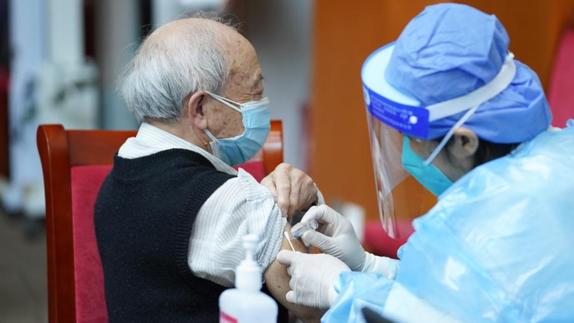 A medical worker injects COVID-19 vaccine for a senior citizen in Dongcheng district of Beijing, capital of China, April 18, 2022. (PHOTO / XINHUA)
A medical worker injects COVID-19 vaccine for a senior citizen in Dongcheng district of Beijing, capital of China, April 18, 2022. (PHOTO / XINHUA)
BEIJING - China will offer a second COVID-19 booster dose to certain groups who had received their first booster shot more than six months, authorities said Wednesday.
The targeted groups are people with a high risk of infection, elderly aged over 60 years old, people with serious underlying health conditions and those with low immunity, according to a circular released by the State Council joint prevention and control mechanism against COVID-19.
Sequential booster immunization, a vaccination strategy that uses different types of vaccines for booster inoculations, or omicron-resistant vaccines, are preferred in choosing second booster doses
All vaccines approved for conditional marketing or emergency use can be used as a second booster dose, according to the document.
It adds that sequential booster immunization, a vaccination strategy that uses different types of vaccines for booster inoculations, or omicron-resistant vaccines, are preferred in choosing second booster doses.
READ MORE: Inhalable vaccine now available in Shanghai
The circular also calls for efforts from health authorities at all levels to ensure vaccination safety and to orderly propel the second booster inoculation program with thorough emergency response plans at vaccination sites and timely updated inoculation information.
Counting of asymptomatic carriers
China also stopped publishing data reflecting the number of asymptomatic carriers of the novel coronavirus starting from Wednesday, according to an official with the Chinese Center for Disease Control and Prevention (China CDC).
Currently, COVID-19 nucleic acid testing is carried out mainly under the strategy of "ensuring testing for only those who so choose," explained Li Qun, head of the Public Health Emergency Center of the China CDC.
Many asymptomatic carriers no longer participate in testing and don't need to seek treatment from health institutions, and so it is difficult to accurately grasp the actual number of asymptomatic cases, said Li.


